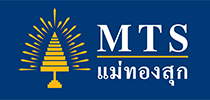



The U.S. Dollar Index, which tracks the greenback against a basket of other currencies, fell 0.1% to 95.44 by 1:18AM ET (05:18 GMT).
The two-day trade talks between China and the U.S. ended on Thursday with no major breakthroughs.
"I think Powell may imply that regardless of political pressure the Fed may continue with rate hikes as long as the U.S. economy keeps expanding," said Masafumi Yamamoto, chief currency strategist at Mizuho Securities.
"If the market can confirm that, then I think the dollar's strength will continue, especially against the yen, and dollar/yen will head for 112 or the July high of around113."
.png)
· The demand for the single currency remains firm this week and is now lifting EUR/USD back to the vicinity of 1.1580, or daily highs.
EUR/USD looks to Jackson Hole, data
Spot is up for the second consecutive week so far, extending the rebound following last week’s fresh 13-month lows in levels just below 1.1300 the figure.
After yesterday’s pullback, the pair seems to have resumed the upside and approaches the critical barrier at the 1.1600 milestone, all amidst the persistent offered bias around the buck.
Later in the session, US Durable Goods Orders will be the sole data release today. From the Jackson Hole Symposium, all the attention will be on the speech by Fed’s Jerome Powell, although investors do not expect any surprises.
EUR/USD levels to watch
At the moment, the pair is gaining 0.28% at 1.1572 facing the next hurdle at 1.1623 (high Aug.22) seconded by 1.1629 (high Aug.8) and finally 1.1745 (high Jul.31). On the other hand, a break below 1.1535 (21-day SMA) would target 1.1468 (10-day SMA) en route to 1.1299 (2018 low Aug.15).
· Fed Chairman Powell is expected to give a speech at 10 a.m. ET (5 p.m. London time). The address comes after recent comments from President Donald Trump that he wasn't thrilled with the work of the central bank.
· Fed Chair Jerome Powell is not likely to reveal any change in Fed interest rate hiking policy when he speaks Friday.
President Trump is not alone in his view that higher interest rates could hurt the economy, and some economists have already been looking for any sign the Fed could pause due to other risks.
· Yesterday the Federal Reserve released minutes from the early August FOMC meeting. The minutes revealed a high likelihood that September’s meeting will result in the third rate hike this year. The CME’s FedWatch tool currently predicts that there is a 96% probability that the Fed will raise Fed funds rates in September. The minutes also revealed that there is a high likelihood that the Federal Reserve will change the language describing their monetary policy from “accommodative” to “neutral.”
They also indicated that the current trade disputes are a wildcard that could change the timing of rate hikes, with the possibility that they would temporarily halt any rate hikes if the trade disputes develop into a full-blown trade war.
· China will keep hitting back at Washington as more U.S. trade tariffs are imposed, but its counter-strikes will remain as targeted as possible to avoid harming businesses in China - whether Chinese or foreign, Finance Minister Liu Kun said.
For now the impact of the China-U.S. “trade frictions” on the Chinese economy has been small, but he is concerned about potential job losses and lost livelihoods, Liu, 61, told Reuters on Thursday in an interview at the finance ministry, his first with the media since taking up the position in March.
· U.S.-Mexico talks to craft a deal on new auto industry rules under the NAFTA trade pact are poised to continue into next week, Mexico’s economy minister said on Thursday, as friction persists over the threat of more restrictive U.S. import rules.
· Treasurer Scott Morrison will become Australia’s new prime minister after winning a Liberal party leadership vote on Friday, ending an internecine battle that has scarred the conservative government ahead of an election due by May 2019.
Morrison’s victory, however, may not end the political uncertainty in Australia with outgoing prime minister Malcolm Turnbull saying he would resign from parliament, forcing a by-election and risking the government’s one-seat majority.
· Oil prices rose on Friday as U.S. sanctions on Iran are expected to cut significant volumes of crude from the market.
Brent crude oil futures LCOc1 were at $75.19 per barrel at 0640 GMT, up 46 cents, or 0.6 percent, from their last close. Brent is on track for a 4.7 percent weekly rise.
U.S. West Texas Intermediate (WTI) crude futures CLc1 were at $68.32 per barrel, up 49 cents, or 0.7 percent. WTI is heading for a 3.7 percent weekly increase.
Traders said the supply versus demand outlook for oil markets was relatively tight because of the looming U.S. sanctions against Iran, which will target oil exports from November.
